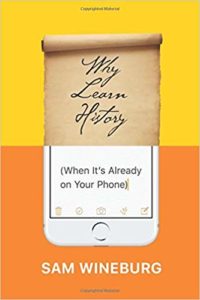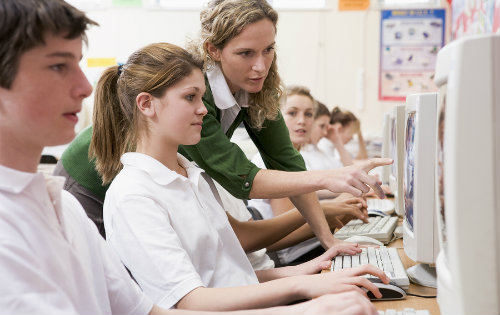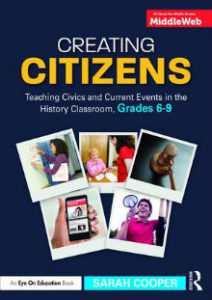Teach Students to Read Like Fact Checkers Do
A MiddleWeb Blog
 Those of us who have used the Stanford History Education Group’s wealth of materials, from assessments to primary sources, will not be surprised to learn that founder Sam Wineburg’s new book is a game changer for history teachers.
Those of us who have used the Stanford History Education Group’s wealth of materials, from assessments to primary sources, will not be surprised to learn that founder Sam Wineburg’s new book is a game changer for history teachers.
Why Learn History (When It’s Already on Your Phone), published by the University of Chicago (2018), contains too many deep and different ideas to talk about in one blog post.
I’ll focus on one of the book’s best insights: teaching students to evaluate websites laterally in addition to vertically. It’s valuable knowledge for anyone teaching media literacy, current events, or simply how to investigate potential resources on the internet.
“Why Google Can’t Save Us”
After a series of fantastic chapters on the importance of context, sources and well-roundedness in history teaching, Chapter 7 – “Why Google Can’t Save Us” – knocked my socks off with its stories.

Wineburg hoped to answer this question, in spades, by giving “ten historians (average age forty-seven), all teaching at four-year colleges and universities,” a series of tests that lasted about an hour.
What were the historians supposed to do? “Their goal was to establish the trustworthiness of the digital information they encountered.”
The first assignment, which Wineburg describes in detail, asked the historians to “contrast…information about bullying that appeared on the sites of the American College of Pediatricians and the American Academy of Pediatrics.”
The organizations’ names may be similar, but their missions are entirely different: The American College of Pediatricians “is a splinter group that broke away from the main group [of the American Academy of Pediatrics] in 2002 over the issue of adoption by same sex couples” (146).
How Did the Historians Do?
On their battery of tests, many of the historians judged the sites on superficial issues such as fonts and footnotes, leading a number of them to the inaccurate conclusion that the ACP is the more reputable organization.
Why did these professionals get duped? Perhaps, in fact, because they are professionals, accustomed to trusting the information they imbibe: “In the world of scholarly publishing, the practice of citation is held in check by overlapping safeguards.” On the other hand, “[n]one of these safeguards apply to unfamiliar websites” (148, 149) – to inherently uncertain content online.
Lateral Reading = Taking Bearings
Who didn’t get fooled? A group of professional fact-checkers who submitted to the same slew of assessments. Unlike the “seven of ten historians [who] never left the two [pediatric] websites to seek out further information,” the fact-checkers ranged across the Web with speed and acuity.
Here’s the kicker about the fact-checkers, who scan sites for a living:
“Whereas most of the… academics read the Web vertically, their eyes moving up and down the screen as though it were a page of print, fact checkers read laterally, leaping from an unfamiliar site almost immediately and opening up multiple search windows. This horizontal scan of other sites gave them a near-instantaneous fix on where they had originally landed” (150).
Encouraging Our Students to Cross-Check
This lateral v. vertical terminology is brilliant, describing exactly what we want our students to do when they wonder about the accuracy of an online source. Don’t take the site’s word for its own credibility – go somewhere else to find out what other people think!

A final fabulous suggestion is to go to WHOIS, which shows the name of the person who has registered a site.
The Game Has Changed
I’ve only begun to scratch the surface of how eye-opening I found this chapter, and Why Learn History in general, and I can’t wait to apply what I’ve learned as my students embark on their next research tasks.
In the meantime, I’ll keep in mind a caveat from Wineburg:
Yes, some skills have been crucial for students to know since time immemorial.
“However, the performance of professional historians and talented Stanford undergraduates suggests that time-honored ways of evaluating information may not be enough to navigate a serpentine digital terrain. Critical thinking and reading remain indispensable. But these interviews show that they are not enough” (153).
In web searching, we need our students to be nimble and clever, not just focused and tenacious. And we as teachers need to guide them toward this modern agility.
___________________________________________




































